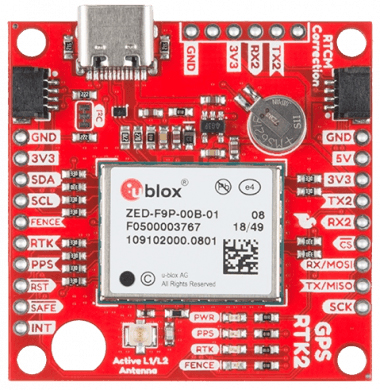The list of SparkFun's u-blox shields just got longer
Imagine you had a pet turtle. Let’s call him u‑lysis. u‑lysis the turtle lives in his pen in your backyard and spends most of his time hiding behind rocks, which is why you can never find him when you are looking for him. Surveillance cameras won’t do the trick, unless you set one up in each corner of his pen. What you need is a tracker. You could buy one online. But wouldn’t it be a lot more fun to make one yourself?
Why not. But what if you aren’t an electrical engineer? Then you need to check out SparkFun’s website. SparkFun has made it their mission to make it easy for makers, from greenhorns to gurus, to turn their ideas into working prototypes. And now, SparkFun has added a suite of u‑blox modules to their portfolio that you could use to keep an eye on u‑lysis’s whereabouts.
“Whether you’re prototyping a turtle tracker or any other IoT device, our latest collection of shields featuring u‑blox technology will give you a solid foundation to build on. We’ve been consistently impressed by the quality and performance of u‑blox cellular and positioning modules, which is why we’re so excited about bringing them to our community of makers,” said Nathan Seidle, founder of SparkFun and founder and head of the SparkX research group.
Over the past months, the company has gone into mass production with a number of GNSS receiver boards featuring u‑blox modules. If standard precision is enough for you, our SAM‑M8Q, featured on a SparkX GPS Breakout board achieves accuracies to within a few meters. If that isn’t enough, you could opt for SparkFun’s high precision GPS‑RTK board. Featuring our NEO‑M8P, it is accurate to within less than three centimeters using GNSS correction data. And if you want to go all the way, SparkFun’s GPS‑RTK2 board, built around our ZED‑F9P high precision GNSS module, leverages our most recent high precision GNSS module’s multi‑band capability to speed up convergence times, delivering centimeter‑level accuracy in seconds.
But measuring u‑lysis’s position is only the first step. You’ll still need a cellular module to upload the position readings to the cloud so that you can track him from your smartphone. If you’re lucky enough to live in an area with NB‑IoT or LTE‑M coverage, you’ll be able to hook up your GNSS receiver to SparkFun’s new LTE Cat M1 / NB‑IoT shield featuring our SARA‑R4 module. Of course there’s more to getting the turtle tracker up and running, but figuring that out is part of the fun.
If you’re going for the high precision tracker, you might need to catch up on how RTK correction services work. SparkFun has a tutorial on that. Don’t know how to use u‑center to test your GNSS receiver? You can find that on their website too. And if you get stuck in the process, they have a bustling online forum where you’ll get help from more advanced users. In the process, you’ll climb the ladder from greenhorn to guru, one rung at a time.
Your neighbors might, at some point, look over their fence and see u‑lysis wearing his tracker taped to his back, and ask you to make one for their turtle too. And as word spreads and more requests come in, it dawns on you that you just may have stumbled upon a business opportunity. u‑lysis turtle tracking Ltd. is born. Armed with all the skills you acquired designing the prototype, you tackle the challenge of miniaturising your solution head on, start a crowdfunding campaign, and take it from there. Who knows where the adventure might take you.
Guest blog written by Michael Ammann, Senior Principal, u‑blox.
Courtesy of u-blox.











